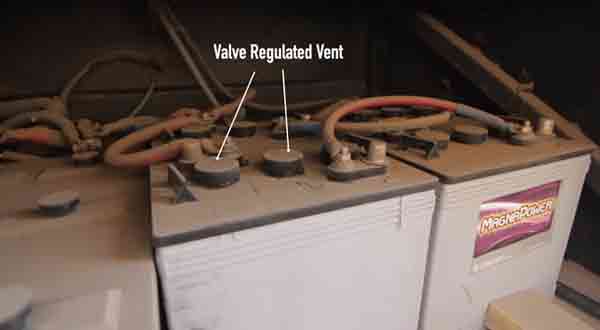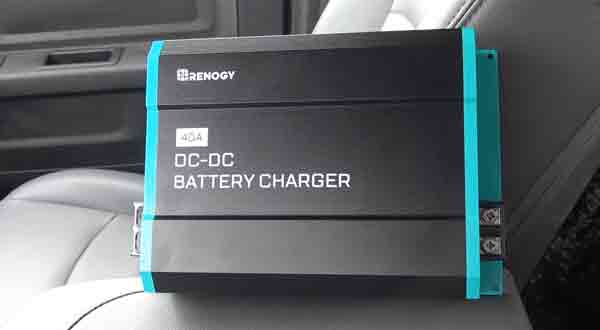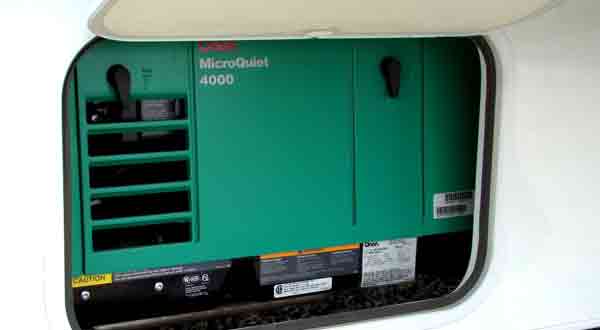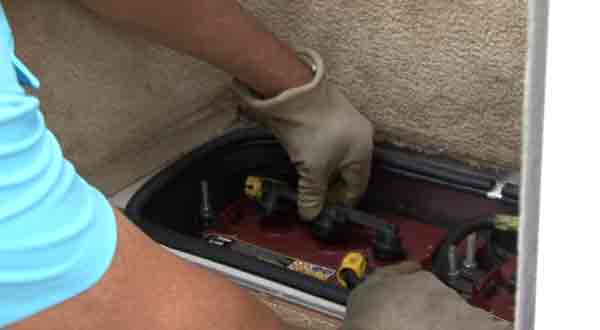RV battery is an integral part of your RV. Without it, you wouldn't be able to run RV or any device in it (such as air conditioner). The good news is that most of the time you don't need to pay attention to it. But what happens when the battery drains? What happens if your RV battery drains in the middle of a road trip? Could you charge it as you are driving? If you can then how to charge RV battery while driving?
In this article, we will discuss the problem of RV battery drainage, charging, maintenance, and so forth. In short, we will explain how to take care of your RV battery, thus making it more efficient, durable, etc. Also, we will describe the best method of charging your RV battery while driving.
Note that there are multiple methods of charging the RV battery (while driving). And though you could look online for other methods, we can't guarantee their success. However, we can assure you that the technique in this article not only works but works very rapidly and efficiently.
What is an RV Battery Anyway?

RV batteries are most commonly 12-volt deep cycle batteries (see Wiki for more info). In short, they are designed to last over an extended period. And unlike the regular starter (automobile) batteries, you use up to 75% of their power.
Everything that uses electric power in your RV drains the battery. These batteries are quite durable; if maintained properly, they will serve you for over a decade. What do we mean by proper maintenance? For starters, research the brand and the type of battery you have.
Though they all feature 12-volt system, their capacities vary. Also, the recharge timing varies. It is essential that you let the battery recharge to its fullest. Don't get impatient because you could damage the battery and affect its durability. Furthermore, if you aren't using it, unplug the ground wire.
And regardless of the brand, we suggest you never let your battery below 50%. Also, always charge it to 100%. Why? Charging it up to 100% affects its durability on a long-term level. Moreover, a fully charged battery will have slightly more voltage. The voltage level is one way of determining the battery status.
If it feels as if the rig in your RV isn't functioning to its fullest, it could mean that your battery is running out of power. However, there are simpler ways of determining battery status. For instance, a digital voltmeter will tell you the number of volts in the battery. Also, you could purchase battery monitoring kit, which will give you a lot of information regarding battery status.
How To Charge RV Battery While Driving In Easy Steps?
Here is a short list of items you need to obtain to make the charging while driving possible:
- plugs (preferably Anderson)
- high-quality cables (with high amperage capacity)
- Voltage Controlled Relay
Step One
You'll need to obtain device called Voltage Controlled Relay. It's kind of like an automatic on/off switcher. It acts as a regulator and bridge between starter and auxiliary battery. So, if the RV is off, the device will stay off two, and disconnect the starter battery from the auxiliary battery.
Similarly, once you start the RV (that is, the truck), the voltage controlled relay will bridge the starter with the battery. The best part about the voltage controlled relay is that it resets the voltage levels after use. It also operates automatically thus saving the energy when the truck is off.
Step Two
Firstly, you'll need to obtain high-quality cables. We also suggest you use Anderson plugs since they lose minimum voltage while transferring the energy. Make sure the cable can be attached to the tow bar.
If things get heated up, don't worry. Most batteries have built-in anti-hazard systems. Generally, if the connection is above 50 amperes, the circuit protection system will shut everything off to prevent the hazard. Also, the Anderson plugs are excellent carriers. Not only are they efficient, but can carry a vast amount of amperes during the transmitting process.
Boost Stage ( or Bulk)

Bulk is the fastest phase of battery charging. It is a phase where the battery uses almost all ampers and volts emitted by the charger. The stage is usually initialized when the battery is entirely or nearly empty.
Float Stage
When your battery is approximately 95% full, it enters float stage. The charge is still active, and the voltage will remain at about 13.4 volts. In float state, the current continues to flow into the battery, but the battery absorbs only a fraction of that current.
Charging With Generator
RV batteries will be more efficient and durable if you take good care of them. Using a generator can undoubtedly help since most RV's can utilize generators and converters. However, knowing which generator and converter are the best is a whole different story. Also, there are several ways you could use the generator to charge your RV battery; here's the most efficient one.
Terminology
The generator transforms gasoline, diesel or similar fuels into the 120 volts (or 240) electrical energy. As the name suggests, the generate electricity (AC), which is later converted by the converter.
The converter is a device which transforms 120-volt energy (generated by generator) into a 12-volt power. Everything in your RV uses a 12-volt system, so everything depends on the converter.
Battery
As we suggested previously, you have to find out which battery your RV uses. Some RV's even have enough room for two batteries, which doubles the energy efficiency. It is essential that you understand voltage (RV batteries are either 12 or 6 volts), and that you follow the manufacturer's suggestions.
The more attention you pay to your battery now, the less problem you will experience in the future. In any case, allow your battery to recharge fully; that is the only way to ensure long-term usability and maximum durability.
Battery Care
Taking care of your battery will affect its recharge speed, recharge capacity, and overall durability. Make sure the electrolyte levels are optimal. Also, replenish with distilled water when such action is needed. Most importantly, never let your battery discharge below recommended percentage (often 20%).
On Internal Generator

As we said, the generator and converter together produce 12-volt energy. You can, however, use the generator to charge the batteries with it. If you want to charge the battery with a generator, make sure all other devices are turned off.
Also, be aware of the fact that charging house batteries with a generator will be slow. Furthermore, you know that the generator won't charge your batteries fully. So, plugging into an A/C socket and charging the battery via converter is doable, but slow and inefficient. But, it is doable and will get you by in the times of need.
What Is An Alternative To Converter?
The most efficient method is to obtain the three-stage charger. Even when they use generator power, these three stage chargers will still charge the battery fully and rapidly.
Most modern RVs come with three stage chargers, but if your RV doesn't use it, you can buy it yourself. Note that the three-stage charger will prolong the RV's battery lifespan and efficiency.
Recharge Time
A lot of factors affect recharge time: battery size, converter quality and capacity, generator amp usability, current battery status (in %), and so forth.
You also have to understand that different stages (such as float or bulk) affect the charging speed. For instance, it would take less time to charge from 50% to 60% than from 80% to 90%.
Generally speaking, it will take roughly 2.5 hours to charge an 800 battery using a 100 A charger from 80% to 100%. Consequently, it would take 10.5 hours to go from 20% to 100%. Again, it all depends on the current status, battery capacity, charge speed, and so forth.
Assuring The Battery's Functionality And Durability (Tips And Tricks)
There are a couple of things you can do to assure the battery's long-term use:
Prevent Sulfation
Sulfation happens when the battery is below its recommended stage. Though the recommended phase varies from battery to battery, most batteries shouldn't fall below 80%.
To prevent sulfation, charge the battery once it is under 80%. You could also use tools such as battery charger or maintainer to prevent sulfation. In any case, don't let your battery fall under 10.5 volts, and don't let it slip under 80%.
Batter's DoD
DoD stands for Depth of Discharge (see Wiki). If you reduce it and keep it minimal, it can help increase the battery's overall durability.
When Not Using, Turn It OFF
The process is relatively straightforward: a lot of things drain battery power. Things like clocks, timers, TV antenna all use RV battery power, even when the RV is off. So, if you have a built-in battery on/off switch, turn the battery off.
Also, make sure you perform regular checks when the battery is in storage. Preventing the unneeded battery discharging will prolong its durability (and conserve energy). On the other hand, consistent checking will tell you when you need to recharge the battery.
What to Avoid?
There are two major things you need to avoid: hot weather and overcharging. Well, they are interconnected: in both cases, you have a heat problem. Make sure electrolyte levels are optimal, add distilled water, and don't push things too hard during those hot summer days.
Understanding Crucial Things About RV Battery

RV battery powers virtually everything in your RV. Without it, nothing in your RV would work. That is why the RV battery is deep-cycle battery: it can store a lot of power and is built to last. It is that deep cycle system that allows it to run your entire rig over an extended period.
On Storage
Most RV owners store their vehicles during winter. Though this is a period of rest, the battery will still dissolve. That is why you need to check it regularly, making sure it doesn't fall below the recommended level. We suggest you perform the check once a month. Or, if the battery is too old, buy a new one for the upcoming season.
Charging The Battery
As soon as you connect the RV to a compatible power source, the battery will start charging. Most RVs come with converter or charger. They convert the power (120 to 12) and then transfer that power to the battery adapter.
However, if your RV doesn't have these tools, purchase the three-stage charger. Or, if you own a generator, you can use it to power the battery via it. The best device for charging in storage is three stage charger. Not only will it charge the battery efficiently, but will also prevent overcharging.
The easiest way to tell the charging status is by checking voltage. Some RV's come with built-in battery monitors (like solar powered ones). You could also buy a digital voltmeter to evaluate the battery status.
Maintenance
Many things affect battery's lifespan. Some RVs have room for two cells, which should be utilized. When it comes to maintaining, prevention is the key. Avoid the things we suggested, charge regularly and patiently, and give your batteries some rest.
If severely damaged, replace them with new deep batteries. Also, know that the batteries are available in several sizes. Naturally, buy the ones according to your needs and space.
Life Expectancy
Depending on usage, and overall quality, batteries can last up to five years (generally). To prolong, charge correctly, unplug when in storage, avoid overcharging and heat. Also, we suggest you disconnect the main wire to prevent unnecessary draining (while in storage). In fact, removing the main cable is the safest and most efficient way of conserving energy while in storage.
And while we do live in "impatient times," where everything is "instant and now", we can't stress enough the importance of full charging. Stopping the charging while still in process damages the battery on the short and long-term basis (damages your wallet too).
How Long Should I charge My Batteries?
Well, it depends on several things. Firstly, there is the battery charger size/capacity. The charger is the one that transfers the energy from the socket to the battery adapter. If it is quality made, had good insulation and efficient power transferring system, charging will take less time.
Furthermore, battery's status affects charging speed. Naturally, it will take more time to charge from 20%-80% than from 30%-80%. Battery's capacity also plays a role in this. And we aren't just talking about the overall capacity, but amper per hour capability.
For example, some batteries can store 2000 ampers per hour, others 3000. Naturally, the more significant the margin, the faster the charging. Alas, the charger's current also plays a role in this, that is, how many ampers it transfers, and how efficient is the transfer process.
Final Thoughts
Charging while driving is possible, but it requires proper tools and knowledge. We hope you will put this information to use, and that you will benefit from it in every possible way.
I am paying attention to Charging With Generator. Can you explain it clearly about the way to conect it or somethings for me? Thanks so much!
Thanks for your question. There are many battery chargers used for Acid/Lithium batteries. You can select anyone according to your desired output.
Many useful information in this article. It help me more undersatnd about charge rv battery. Thank you so much!
It is totally our pleasure. 🙂